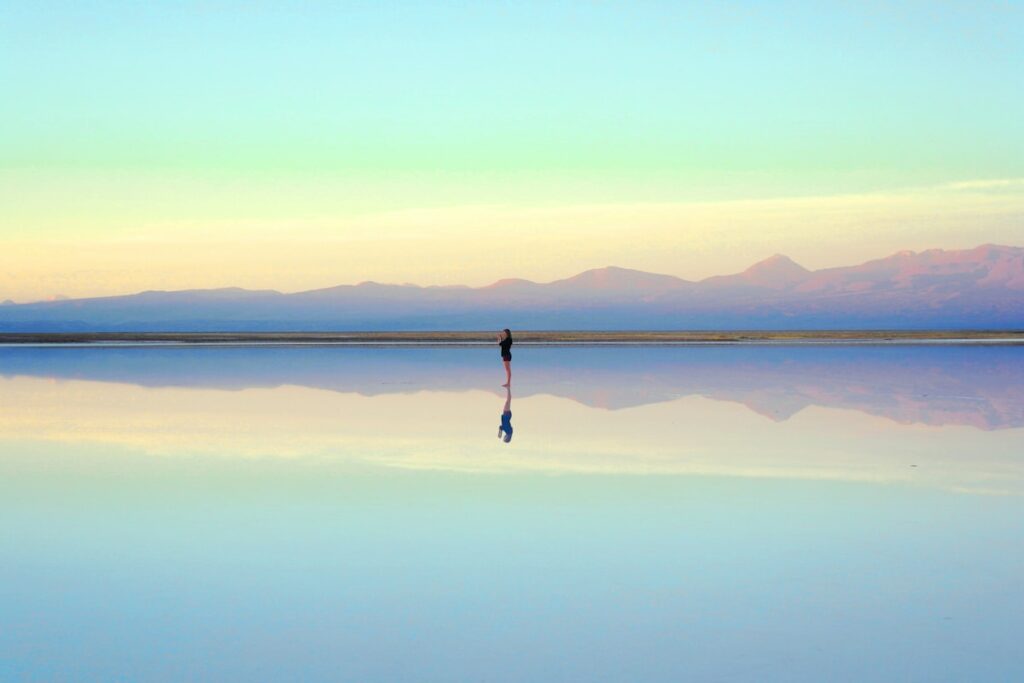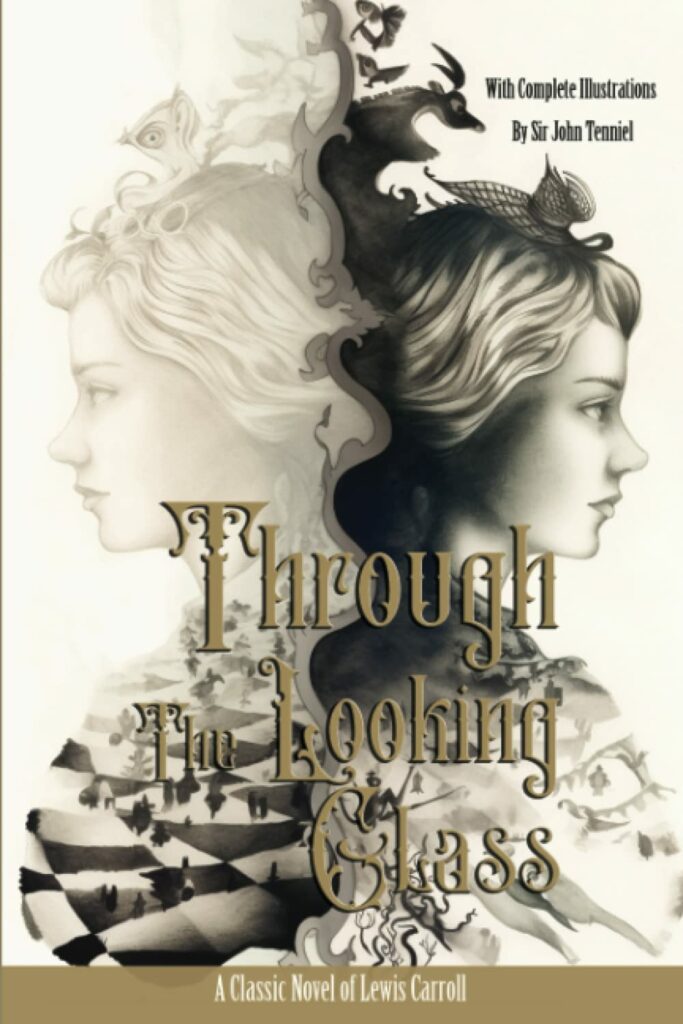Feeling Good and Happy Through Smoke and Mirrors, Beyond the Conspiracy Culture
In previous decades, conspiracy theories were often limited to fringe groups, pamphlets or underground radio shows. But the rise of social media platforms has allowed these ideas to scale up like a pandemic. How do you protect your sense of wellbeing, how to you feel good and happy in a conspiracy culture?

When you turn on the news these days, it can feel like stepping into a world not unlike the one Alice discovers in Through the Looking-Glass. The moment Alice crosses through the mirror, she finds herself in a place where everything is distorted—logic is turned on its head, people behave unpredictably and the familiar becomes unfamiliar.
Today’s media and social media can evoke a similar sensation. Facts and opinions are often interchangeable, events are framed from dramatically different perspectives and what you see or hear may seem upside down from one channel to the next.
Just like Alice navigating her strange new reality, we find ourselves trying to make sense of a world where nothing is quite as it seems and the truth is elusive. In Lewis Carroll’s story, the looking-glass world mirrors our own but bends its rules—creating a surreal version of reality that feels both recognizable and utterly foreign.
Today, as we consume news, whether it’s through the television, online platforms, or social media, we’re often entering a parallel reality where narratives twist and shift. Each story feels like a reflection of a reflection, familiar yet disorienting, leaving us to wonder what’s real and what’s simply a distortion of the truth. The world, it seems, has never felt more like Alice’s curious journey on the other side of the mirror
As the United States heads into another presidential election season, the world is once again fascinated by the peculiarities of American political life, where, increasingly, reality can feel stranger than fiction. Conspiracy theories have long shaped American history, but their presence has surged in modern times, fuelled by the internet, social media and political polarisation.
Today, we live in a time where misinformation spreads quickly and trust in institutions is at an all-time low, creating a smoke and mirrors medium, “through the looking glass” moment in American politics—one where nothing is as it seems.
The Roots of American Conspiracy Culture
Conspiracy theories are not a new phenomenon in America. They have existed since the country’s founding. The belief that powerful, shadowy forces are manipulating events behind the scenes can be traced back to the early days of the republic. One of the earliest examples was the fear of the Bavarian Illuminati, which in the late 1700s was thought to be infiltrating American society and attempting to subvert the young democracy. The Salem witch trials of 1692, where mass hysteria and fear led to the persecution of alleged witches, also demonstrate how conspiracy-driven thinking can shape collective actions.
The assassination of President John F. Kennedy in 1963 marked a critical moment in modern conspiracy culture. To this day, nearly 61% of Americans believe that Kennedy’s assassination involved more than one person, despite numerous investigations concluding otherwise. The lack of trust in official narratives from the government became a fertile breeding ground not only for industries like printing or film but for future conspiracies.
The Growth of Conspiracy Theories in the Digital Age
The internet is the perfect compost for the spread and growth of conspiracy theories. In previous decades, conspiracy theories were often limited to fringe groups, pamphlets or underground radio shows. But the rise of social media platforms has allowed these ideas to scale up like a pandemic. How do you protect your sense of wellbeing, how to you feel good and happy in a conspiracy culture?
Today, 28% of Americans believe that the government is hiding information about extra-terrestrial encounters, according to a 2023 Pew Research study. This ease of access to information—and misinformation—has eroded trust not only in traditional institutions but in your ability to thing for yourself.
The “Pizzagate” conspiracy began in 2016 during the presidential election. It falsely alleged that a child trafficking ring involving prominent political figures was being run out of a Washington, D.C., pizzeria. Although completely baseless, it led to a real-world shooting incident, highlighting how dangerous the intersection of conspiracy culture and political discourse can be. Around 40% of Americans now believe in at least one conspiracy theory, according to a 2022 Ipsos poll.
QAnon, another conspiracy theory that gained traction in the late 2010s, alleges that a secret cabal of elites is involved in various criminal activities and that only certain political leaders can expose and stop them. What makes QAnon particularly notable is its mainstream reach. According to a 2021 NPR/Ipsos poll, 17% of Americans claimed to believe that “a group of Satan-worshipping elites who run a child sex ring are trying to control our politics.” Such widespread belief in outlandish ideas speaks to the power of misinformation in today’s political landscape.
Divide and conquer
American political polarisation has reached historic levels, with 79% of Americans now believing that the country is more divided than at any point in recent memory. The age-old tactic Divide and conquer has been a key factor in fuelling conspiracy culture. Partisan media outlets and social media echo chambers reinforce people’s beliefs, creating an environment where it becomes harder to distinguish fact from fiction. Pew Research found that 70% of Republicans believed that the mainstream media was covering up or withholding information, compared to 26% of Democrats.
What’s driving this wave of bizarre and sensational conspiracy culture as we get closer to the 5 November 2024? You might believe that America’s conspiracy culture is a reflection of declining trust in traditional institutions, government and academia. According to a 2022 Gallup poll, only 19% of Americans trust the government to do what is right most of the time. Economic inequality, social media algorithms that reward sensational content and a rapidly changing world have also contributed to a sense of overwhelm that conspiracy theories help to explain.
The Conspiracy Culture and the Power of Misinformation
As the 2024 presidential election nears, conspiracy theories continue to play a crucial role in not shaping but blowing up the public perception. In the wake of the 2020 election, the “Stop the Steal” movement falsely claimed widespread voter fraud, despite numerous investigations and court rulings confirming the election’s legitimacy. A Reuters/Ipsos poll from January 2021 found that 60% of Republicans still believed the 2020 election was stolen, underscoring the staying power of conspiracy narratives.
The election process itself has come under scrutiny, with concerns about election security fuelling both legitimate debate and unfounded theories. In a 2022 YouGov poll, 35% of voters said they doubted the fairness of U.S. elections, with the number rising sharply among Republicans. This distrust threatens to undermine the very fabric of democracy, where free and fair elections are a cornerstone.
Conspiracy culture beyond it’s borders
The world watches in both fascination and concern as America navigates its growing conspiracy culture. Countries with more centralized media and governmental structures often view the chaos of American politics as a warning. European nations, for example, where misinformation is also a growing problem, have implemented stringent laws and regulations aimed at curbing fake news, especially during election seasons.
The spread of American conspiracy theories beyond its borders has also raised eyebrows. For instance, QAnon gained traction in countries like Germany and the U.K., though often adapted to local political contexts. It’s a sign that the internet and social media have created a globalised conspiracy ecosystem. America’s current political landscape, where truth and fiction intermingle so seamlessly, has become a case study in the consequences of unfettered misinformation.
A world of smoke and mirrors
As the U.S. heads into its next presidential election, one thing is clear: America’s relationship with conspiracy theories is stronger than ever. The political landscape has become a reflection of a broader cultural trend where scepticism of institutions and elites reigns supreme, and where misinformation spreads faster than facts. In this “through the looking glass” America, where conspiracy and reality blur, the world watches with bated breath, wondering what will come next.
While occasionally listening or reading the news, I always take them with an extra large pinch of salt. Conspiracy theories have always been part of America’s fabric, but their current dominance in the recent headlines raises critical questions about the future of democracy itself. At a time when very little is as it seems, discerning the truth has become more important—and more challenging—than ever.

As we navigate the vast desert of information and misinformation in everyday life , we’re much watching the camels’ shadows stretch and distort with the shifting light. Depending on where the light comes from—whether it’s the media we consume or the voices we listen to—these shadows can seem larger than life, looming over us like giants.
Always remember that the desert’s shadows are just reflections of the real world and the narratives we encounter could be distortions, shaped by perspective and angle. To find clarity, we must remind ourselves that the size of the shadow doesn’t always match the truth and it’s only by questioning where the light is coming from that we can see things as they truly are.
Do you want to share your story and inspire our readers ? Know that YOUR EXPERTISE is paving the way for a fairer, happier society.





